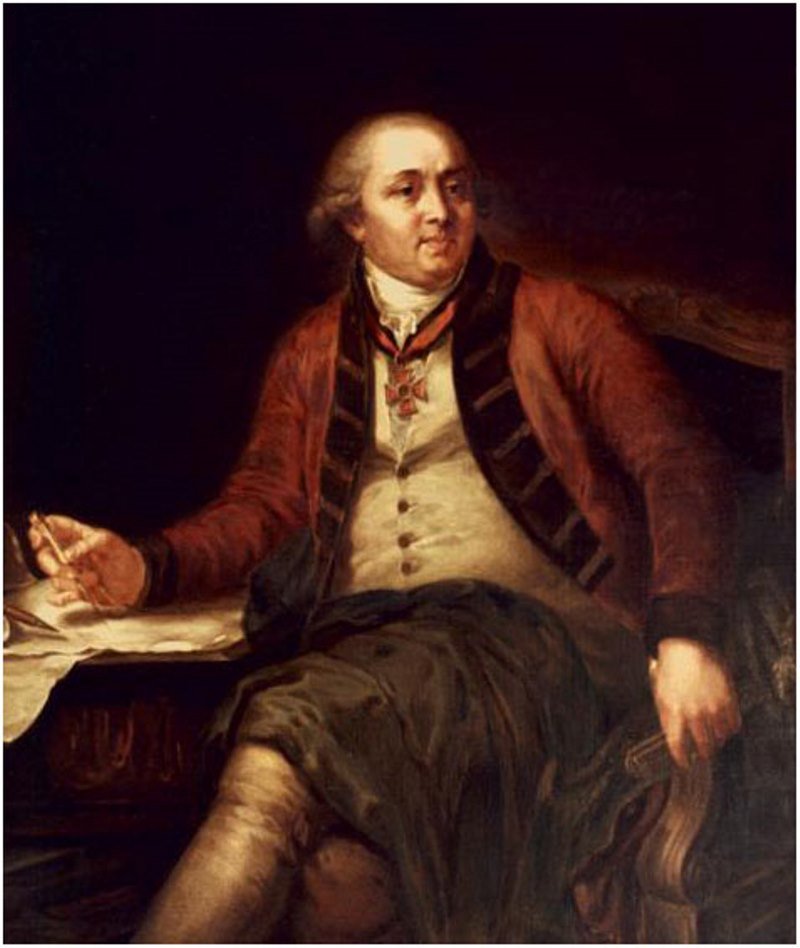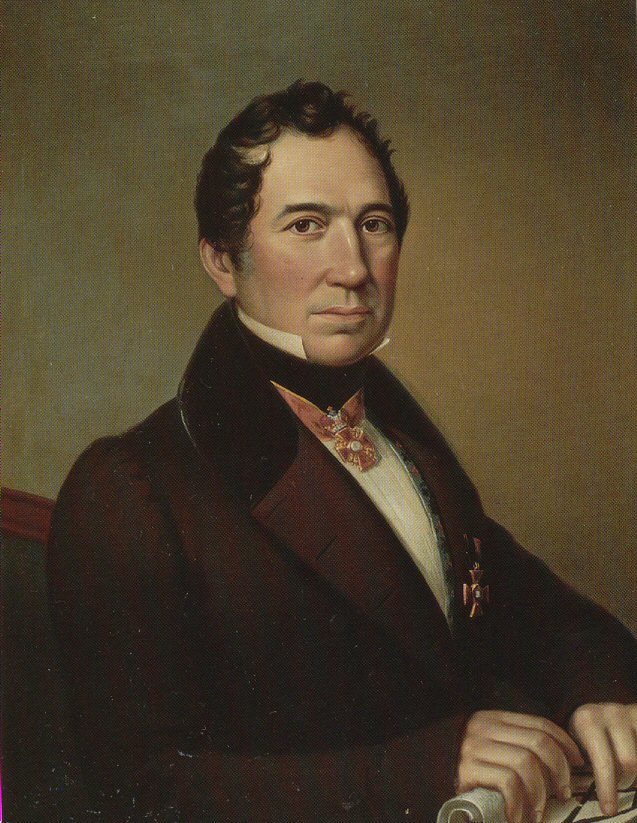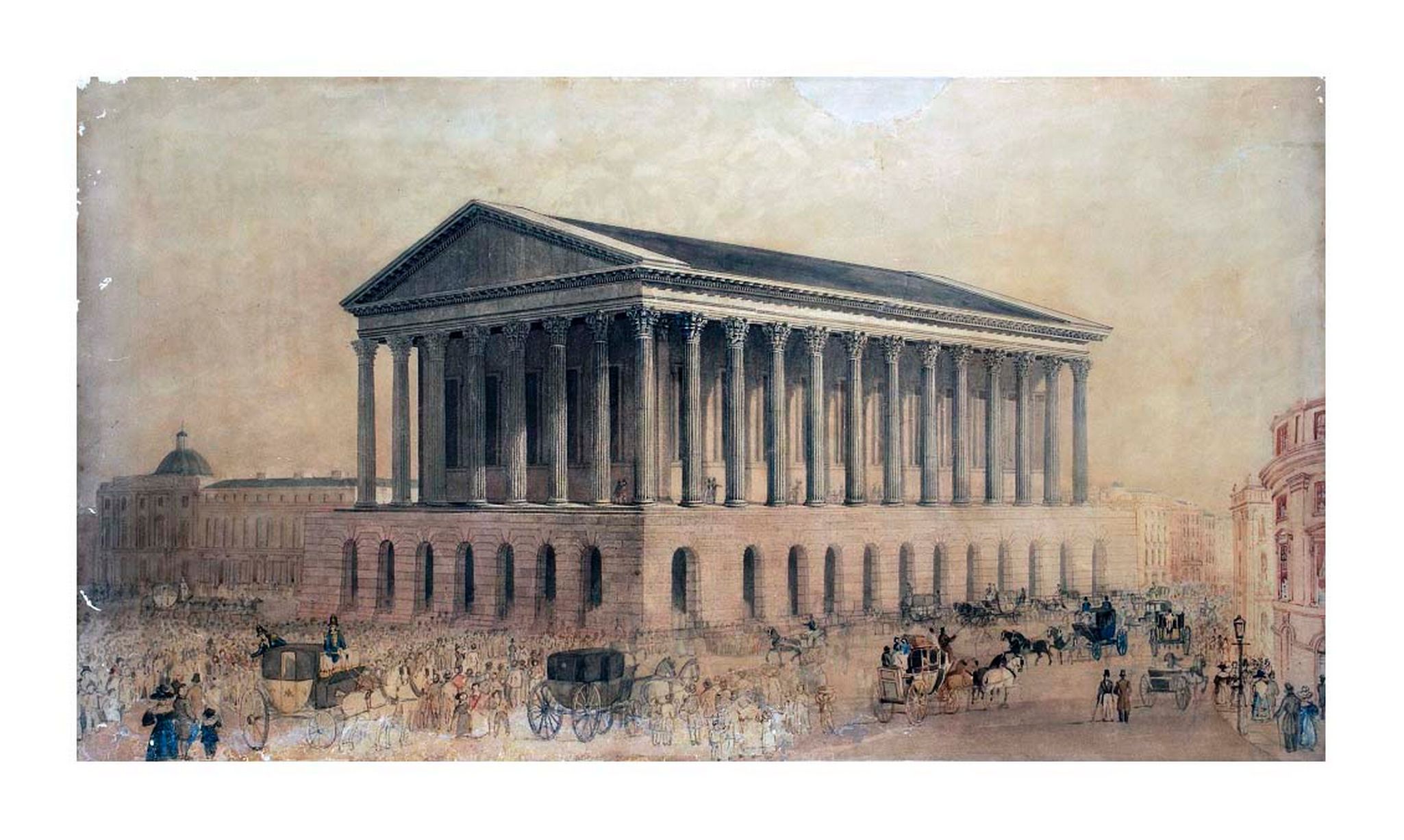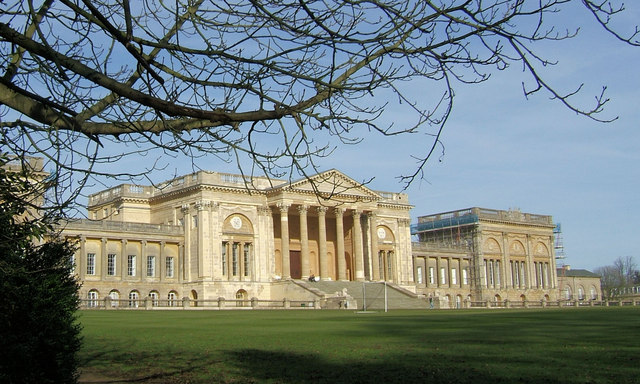|
1778 In Architecture
The year 1778 in architecture involved some significant events. Events *Ivan Starov draws up a radial urban master plan for the Russian city of Yaroslavl. Buildings and structures Buildings *Denton Hall, Wharfedale, England, designed by John Carr, is completed. *Reconstruction of Downton Castle, Herefordshire, England by Richard Payne Knight in Gothic Revival style is largely completed. *Emin Minaret, Turpan, modern-day China, is completed. *La Scala opera house in Milan (Lombardy), designed by Giuseppe Piermarini, is opened and remodelling of the Royal Palace of Milan by him is largely completed. Awards * Grand Prix de Rome, architecture: ''prize carried over to 1779''. Births * January 4 – Jean-Antoine Alavoine, French architect (died 1834) * August 31 – William Wilkins, English architect (died 1839) * July 3 – Carl Ludvig Engel, Prussian architect working in Finland (died 1840) Deaths * November 9 – Giovanni Battista Piranesi, Italian etcher of architectural vie ... [...More Info...] [...Related Items...] OR: [Wikipedia] [Google] [Baidu] |
Ivan Starov
Ivan Yegorovich Starov (russian: Ива́н Его́рович Старо́в) (23 February 1745 – 17 April 1808) was a Russian architect from Saint Petersburg, St. Petersburg who devised the master plans for Yaroslavl, Voronezh, Pskov, Dnipro, Mykolaiv, and many other towns in Russia and Ukraine. His radial urban master plan for Yaroslavl (1778), cleverly highlighting dozens historic churches and towers, is recognized as one of the World Heritage Sites. Starov was one of the first graduates of the Moscow University College (1755–1758) and of the Imperial Academy of Arts (1758–1762). He continued his education in Paris (1762–1767) and Rome (1767–1768), becoming apprenticed to Charles De Wailly and other fashionable architects of his day. Back in Russia, he delivered lectures in the Academy of Arts, which nominated him academician (1769) and professor (1785). Starov held the post of the principal architect of St. Petersburg between 1772 and 1774. ... [...More Info...] [...Related Items...] OR: [Wikipedia] [Google] [Baidu] |
Grand Prix De Rome
The Prix de Rome () or Grand Prix de Rome was a French scholarship for arts students, initially for painters and sculptors, that was established in 1663 during the reign of Louis XIV of France. Winners were awarded a bursary that allowed them to stay in Rome for three to five years at the expense of the state. The prize was extended to architecture in 1720, music in 1803 and engraving in 1804. The prestigious award was abolished in 1968 by André Malraux, then Minister of Culture, following the May 68 riots that called for cultural change. History The Prix de Rome was initially created for painters and sculptors in 1663 in France, during the reign of Louis XIV. It was an annual bursary for promising artists having proved their talents by completing a very difficult elimination contest. To succeed, a student had to create a sketch on an assigned topic while isolated in a closed booth with no reference material to draw on. The prize, organised by the Académie Royale de Peinture ... [...More Info...] [...Related Items...] OR: [Wikipedia] [Google] [Baidu] |
1778 Works
Events January–March * January 18 – Third voyage of James Cook: Captain James Cook, with ships HMS ''Resolution'' and HMS ''Discovery'', first views Oahu then Kauai in the Hawaiian Islands of the Pacific Ocean, which he names the ''Sandwich Islands''. * February 5 – **South Carolina becomes the first state to ratify the Articles of Confederation. ** **General John Cadwalader shoots and seriously wounds Major General Thomas Conway in a duel after a dispute between the two officers over Conway's continued criticism of General George Washington's leadership of the Continental Army.''Harper's Encyclopaedia of United States History from 458 A. D. to 1909'', ed. by Benson John Lossing and, Woodrow Wilson (Harper & Brothers, 1910) p166 * February 6 – American Revolutionary War – In Paris, the Treaty of Alliance and the Treaty of Amity and Commerce are signed by the United States and France, signaling official French recognition of the ... [...More Info...] [...Related Items...] OR: [Wikipedia] [Google] [Baidu] |
1720 In Architecture
The year 1720 in architecture involved some significant events. Events *First Prix de Rome in architecture awarded in France to Antoine Derizet. *Nobile Teatro di San Giacomo di Corfù converted into a theatre. Buildings and structures Buildings * Massachusetts Hall (Harvard University) is completed. * Rebuilding of All Saints Church, Oxford (in The High) is completed to designs by Henry Aldrich with tower and spire probably by Nicholas Hawksmoor. * 213 and 215 King's Road, Chelsea, London. * Baroque remodelling of the Church of the Teutonic Order, Vienna, probably by Anton Erhard Martinelli. * Church of the Presentation of the Virgin in the Temple in Bârsana, Romania (one of the wooden churches of Maramureș). * Replacement wooden Holy Trinity Church, Zhovkva, Ukraine. * Schloss Bruchsal in Baden is commissioned from Anselm von Grünstein. Births * March 22 – Nicolas-Henri Jardin, French architect (d. 1799) * October 4 – Giovanni Battista Piranesi, Italian etc ... [...More Info...] [...Related Items...] OR: [Wikipedia] [Google] [Baidu] |
Giovanni Battista Piranesi
Giovanni Battista (or Giambattista) Piranesi (; also known as simply Piranesi; 4 October 1720 – 9 November 1778) was an Italian Classical archaeologist, architect, and artist, famous for his etchings of Rome and of fictitious and atmospheric "prisons" (''Carceri d'invenzione''). He was the father of Francesco Piranesi, Laura Piranesi and . Biography Piranesi was born in Venice, in the parish of S. Moisè where he was baptised. His father was a stonemason. His brother Andrea introduced him to Latin literature and ancient Greco-Roman civilization, and later he was apprenticed under his uncle, Matteo Lucchesi, who was a leading architect in ''Magistrato delle Acque'', the state organization responsible for engineering and restoring historical buildings. From 1740, he had an opportunity to work in Rome as a draughtsman for Marco Foscarini, the Venetian ambassador of the new Pope Benedict XIV. He resided in the Palazzo Venezia and studied under Giuseppe Vasi, who introduced hi ... [...More Info...] [...Related Items...] OR: [Wikipedia] [Google] [Baidu] |
1840 In Architecture
The year 1840 in architecture involved some significant architectural events and new buildings. Events * 27 April – The foundation stone of the new Palace of Westminster in London is laid as its reconstruction to a design by Charles Barry following a fire in 1834 begins (completed in 1860). * 30 September – Foundation of Nelson's Column, designed by William Railton, laid in London, Trafalgar Square being laid out and paved around it during the year. Buildings and structures Buildings opened * 11 May – Wingfield railway station in England, designed by Francis Thompson, is opened. * 31 August – Bristol Temple Meads railway station in England, designed by Isambard Kingdom Brunel, is opened. * July Column, Place de la Bastille, Paris, designed by Jean-Antoine Alavoine and Joseph-Louis Duc, erected, incorporating Auguste Dumont's ''Génie de la Liberté'' and bas-reliefs by Antoine-Louis Barye and others. * Khaplu Palace built. * Old Patent Office Building, Washington ... [...More Info...] [...Related Items...] OR: [Wikipedia] [Google] [Baidu] |
Carl Ludvig Engel
Carl Ludvig Engel, or Johann Carl Ludwig Engel (3 July 1778 – 14 May 1840), was a German architect whose most noted work can be found in Helsinki, which he helped rebuild. His works include most of the buildings around the capital's monumental centre, the Senate Square and the buildings surrounding it. The buildings are Helsinki Cathedral, The Senate (now the Palace of the Council of State), the City of Helsinki Town Hall, and the library and the main building of Helsinki University. Biography Carl Ludvig Engel was born in 1778 in Charlottenburg, Berlin, into a family of bricklayers. It was probably as a bricklayer apprentice that he first came in contact with his future profession as an architect. He trained at the Berlin Institute of Architecture after which he served in the Prussian building administration. The stagnation caused by Napoleon's victory over Prussia in 1806 forced him and other architects to find work abroad. In 1808 he applied for the position as town archite ... [...More Info...] [...Related Items...] OR: [Wikipedia] [Google] [Baidu] |
1839 In Architecture
The year 1839 in architecture involved some significant architectural events and new buildings. Events * May – Cambridge Camden Society is established in England by John Mason Neale, Alexander Hope and Benjamin Webb to promote Gothic architecture; also this year the Oxfordshire Architectural and Historical Society is founded as the Society for Promoting the Study of Gothic Architecture. Buildings and structures Buildings completed * Ponce Cathedral, Puerto Rico * St Mary's Church, Derby, England (Roman Catholic), designed by Augustus Pugin * St Francis Xavier Church, Hereford, England (Roman Catholic), designed by Charles Day * Upper Brook Street Chapel, Manchester, England (Unitarian), designed by Charles Barry * Halifax County Courthouse (Virginia), designed by Dabney Cosby * Old Customshouse (Erie, Pennsylvania), designed by William Kelly * Lyceum (Alexandria, Virginia) * Åbo Svenska Teater, Åbo (Turku), Finland * Pulkovo Observatory, Russia * Söderarm, lighthouse, ... [...More Info...] [...Related Items...] OR: [Wikipedia] [Google] [Baidu] |
William Wilkins (architect)
William Wilkins (31 August 1778 – 31 August 1839) was an English architect, classical scholar and archaeologist. He designed the National Gallery and University College London, and buildings for several Cambridge colleges. Life Wilkins was born in the parish of St Giles, Norwich, the son of William Wilkins (1751–1815), a successful builder who also managed the Norwich Theatre Circuit, a chain of theatres. His younger brother George Wilkins became Archdeacon of Nottingham. He was educated at Norwich School and then won a scholarship to Gonville and Caius College, Cambridge. He graduated as 6th wrangler in 1800. With the award of the Worts Travelling Bachelorship in 1801, worth £100 for three years, he was able to visit the classical antiquities Greece, Asia Minor, and Magna Græcia in Italy between 1801 and 1804. On his tour he was accompanied by the Italian landscape painter Agostino Aglio, whom Wilkins had commissioned as a draughtsman on the expedition. Aglio suppl ... [...More Info...] [...Related Items...] OR: [Wikipedia] [Google] [Baidu] |
1834 In Architecture
The year 1834 in architecture involved some significant architectural events and new buildings. Events * October 16 – Burning of Parliament: Much of the Palace of Westminster in London is destroyed by fire. Augustus Pugin is among the witnesses. * The Institute of British Architects in London, predecessor of the Royal Institute of British Architects, is formed. * First published scholarly description and drawings of a stave church, painter Johannes Flintoe's essay on Heddal Stave Church in ''Samlinger til det Norske Folks Sprog og Historie'' (Oslo, Christiania). Buildings and structures Buildings opened * August 30 – The Alexander Column, Saint Petersburg, Russia, designed by Auguste de Montferrand, is unveiled. * October 7 – Birmingham Town Hall in Birmingham, England, designed by Joseph Hansom and Edward Welch, is opened for the start of the Music Festival, already delayed by a year because of lack of funds. Buildings completed * De Zwaluw, Hoogeveen, smoc ... [...More Info...] [...Related Items...] OR: [Wikipedia] [Google] [Baidu] |
Jean-Antoine Alavoine
Jean-Antoine Alavoine (4 January 1778 – 15 November 1834) was a French architect best known for his column in the Place de la Bastille, Paris (1831–1840), the July Column to memorialize those fallen in the Revolution of 1830. The column, consciously larger-scaled than the column in the Place Vendôme, has a capital freely based on the Corinthian order, with exaggerated corner volutes flanking putti holding swags, a complicated and somewhat incoherent design that found no imitators. However, in 1813 working with another architect, Bridan, Alavoine had designed to Napoleon's orders, under the direction of Ambroise Tardieu, a colossal elephant fountain, the Elephant of the Bastille. This monument was intended for the same Place, to be constructed with a cast-bronze skin over a framework. The statue, in a circular pool, complete with a bronze ''mahout'' on its shoulders, would contain a staircase by means of which visitors could admire the view from its howdah. The monument was ... [...More Info...] [...Related Items...] OR: [Wikipedia] [Google] [Baidu] |
1779 In Architecture
The year 1779 in architecture involved some significant events. Buildings and structures Buildings * St Paul's Square, Birmingham, England. * South façade of Stowe House, England, completed in the neoclassical style based on a design by Robert Adam. * Robert Adam completes his remodelling of Kenwood House on Hampstead Heath, London. * New Church of Ireland Christ Church Cathedral, Waterford, designed by John Roberts, completed. * Fridericianum in Kassel (Hesse), designed by Simon Louis du Ry, completed. * Royal Saltworks at Arc-et-Senans, designed by Claude Nicolas Ledoux, completed. * The Piece Hall in Halifax, West Yorkshire, opened 1 January 1779, Grade 1 listed Cloth Hall. Awards * Grand Prix de Rome, architecture: Guy de Gisors and Père François Jacques Lannoy. Births * April 10 – James Savage, English architect (died 1852) * July 8 – Giorgio Pullicino, Maltese painter and architect (died 1851) * Edward Lapidge, English architect (died 1860) Deaths * Septe ... [...More Info...] [...Related Items...] OR: [Wikipedia] [Google] [Baidu] |










